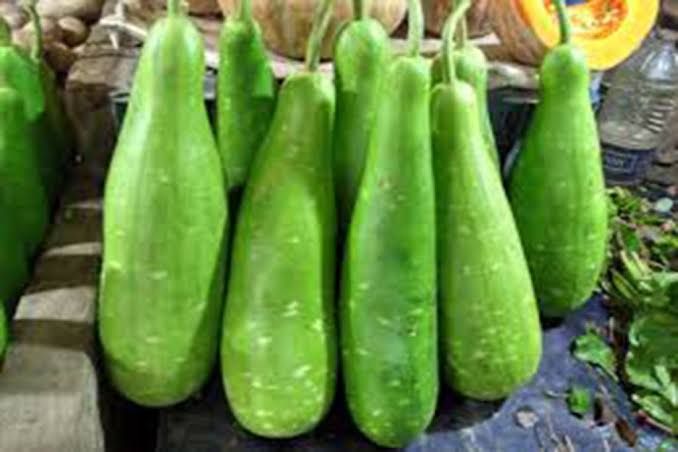
Bismillaher Rahmanir Rahim.
Assalamu Alaikum Wa Rahmatullahi Wa Barakatuhu
Dear Companions Today I want to share with you some words about the evils of killing foetuses.Welcom to this post and congratulations to all
Cultivation of Desi Gourd
Desi gourd, or Indian bottle gourd (Lagenaria siceraria), is a popular vegetable in South Asia, valued for its nutritional and medicinal benefits. Cultivating this gourd requires a warm climate and well-drained soil. Here’s a detailed look at its cultivation:
Climate and Soil Requirements:
Desi gourd thrives best in warm, humid climates and grows well in temperatures between 25–35°C (77–95°F). It is frost-sensitive, so it should be planted after the last frost.
The soil should be loamy and well-drained with a pH range of 6–7.5. The plant needs nutrient-rich soil, so adding organic matter like compost or well-rotted manure before planting is beneficial.
Sowing and Seed Selection:

source
Desi gourd is typically grown from seeds. Seed selection is essential for a high-quality crop; use plump, fresh seeds from a reputable source.
Seeds are sown directly in the field at the beginning of the rainy season. The best sowing time is around March to June, as it allows the plants to mature before extreme heat.
Spacing and Planting:
Desi gourds need ample space to spread. A spacing of about 1.5–2 meters between plants is ideal, as this allows adequate air circulation, reducing the risk of fungal infections.
Seedlings typically emerge within 7–10 days. Seeds are sown about 2–3 cm deep, covering them lightly with soil.
Watering:
Regular watering is crucial for healthy growth, especially in the initial stages and during fruiting. The soil should be kept moist, but over-watering can lead to root rot.
Mulching helps retain soil moisture and control weeds.
Fertilization:

source
Desi gourd requires nitrogen, phosphorus, and potassium-rich fertilizer for optimal growth. Organic fertilizers like compost or manure can also be used.
Apply nitrogen-heavy fertilizers initially to promote foliage, and then switch to potassium and phosphorus as the plant starts to fruit.
Pest and Disease Control:
Common pests affecting desi gourds include aphids, whiteflies, and caterpillars. Organic insecticides or neem oil can be applied to control them.
The crop can also be affected by powdery mildew, mosaic virus, and anthracnose. Proper spacing, removing infected plants, and using fungicides help control diseases.
Harvesting:
Desi gourds are ready for harvest about 70–90 days after planting, when they reach a size of around 20–25 cm in length and are still tender. Overly mature gourds become fibrous and are not ideal for consumption.
Harvesting is usually done by cutting the gourds off the vine with a knife, leaving a short stem attached to prevent spoilage.
Nutritional Value of Desi Gourd

source
Desi gourd is low in calories and high in water content, making it an excellent food for hydration and weight management. It is also rich in fiber, essential vitamins, and minerals:
Caloric Value: Approximately 15–20 kcal per 100 grams.
Carbohydrates: Mainly in the form of natural sugars and dietary fiber, which aids digestion.
Vitamins: Desi gourd is a good source of vitamin C and B vitamins, including folate, essential for metabolic processes and immunity.
Minerals: It contains potassium, which is important for heart health, along with magnesium and calcium.
Fiber: The high fiber content aids digestion and helps prevent constipation.
Water: Composed of around 92% water, it keeps the body hydrated and aids in detoxification.
Additionally, desi gourd has been traditionally valued for its medicinal benefits. It’s thought to have cooling properties, making it a popular choice in hot climates. It's also used to manage blood pressure, improve digestion, and support heart health.
Marketing of Desi Gourd
Market Demand:
Desi gourd is popular in South Asia and among South Asian communities globally, so it has a stable market. Its health benefits, low calorie, and high water content increase its appeal.
Demand typically peaks during the summer months as its cooling properties make it a preferred vegetable in hot weather.
Marketing Channels:

source
Desi gourds are marketed through traditional fresh produce markets, supermarkets, and online grocery platforms.
They are often sold in local farmer's markets and are increasingly available in international markets targeting South Asian diasporas.
Value-Added Products:
Processing desi gourd into products like dehydrated slices, pickles, or powders can increase its market value and shelf life.
Additionally, health-conscious consumers often seek out fresh juices made from desi gourd due to its health benefits.
Export Opportunities:
With a growing demand for ethnic vegetables and organic produce, desi gourd presents opportunities for export, especially to countries with significant South Asian populations like the United States, Canada, the United Kingdom, and the Middle East.
Pricing and Profitability:

source
Desi gourds usually fetch a good price in local markets, especially when sold fresh. Prices can vary depending on seasonality, with higher prices in the off-season.
Additionally, organic and high-quality produce may command premium prices, particularly in urban markets and among health-conscious consumers.
Packaging and Transport:
Desi gourds are delicate and require careful handling. They should be packed in ventilated containers to prevent spoilage. For export, they need to be packed with special attention to maintain freshness.
Conclusion
Desi gourd cultivation is a viable option for small-scale farmers due to its relatively low input cost, ease of cultivation, and significant nutritional and health benefits. With increasing consumer interest in health and ethnic foods, desi gourd has promising market potential both domestically and internationally. To maximize profitability, growers should consider value-added products and export opportunities while maintaining high quality for local and global markets.